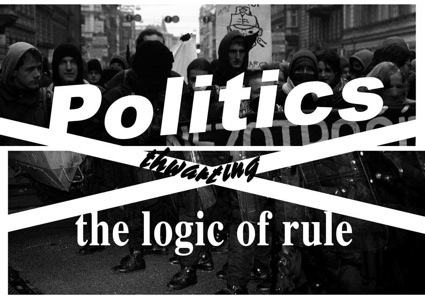 Oliver Ressler, Politics thwarting the logic of rule, 2005
Oliver Ressler, Politics thwarting the logic of rule, 2005
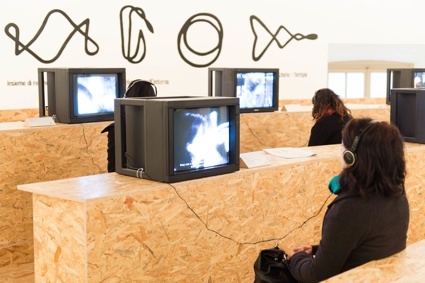 Disobedience Archive (The Republic). Exhibition view. Photo Castello di Rivoli
Disobedience Archive (The Republic). Exhibition view. Photo Castello di Rivoli
I caught the last weekend of the exhibition Disobedience Archive at Castello di Rivoli.
Disobedience Archive is a video collection which explores four decades of social disobedience: from the uprising in Italy in 1977 to the anti-globalization protests and to the insurrections in the Middle East.
The Castello di Rivoli is a stunning contemporary art museum a few kilometers away from Turin. The exhibition had a theme i’m particularly interested in. The works brought together were worth the trip to Rivoli. So far so good. Except that Disobedience Archive (The Republic) was an extremely frustrating exhibition. Videos that were made to inspire people to question, contest and discuss suffer from being hosted into a grand castle located in a provincial town. Rivoli might be one of the most prestigious contemporary art centers in Europe but the well-earned title is not enough to attract the crowds. When i visited the show, on a Saturday afternoon, the rooms were almost empty.
Still, splendid castle to spend an afternoon:
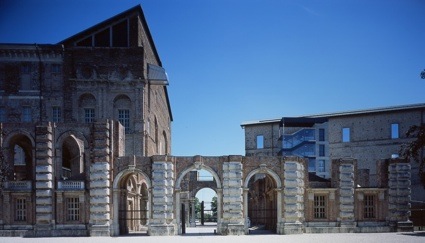 Photo Castello di Rivoli
Photo Castello di Rivoli
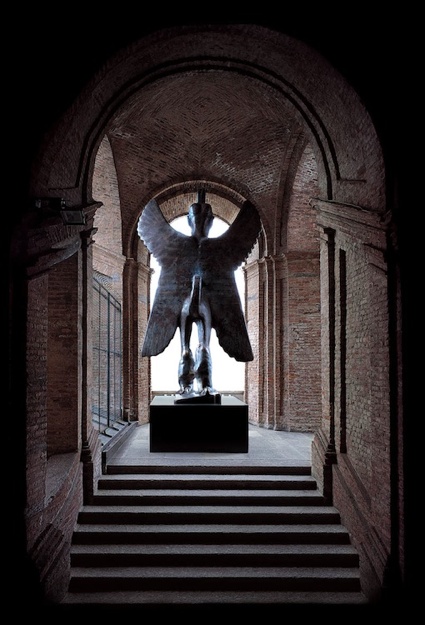 Photo Castello di Rivoli
Photo Castello di Rivoli
This one is part of the collection of the museum. It has nothing to do with Disobedience Archive but how could i resist adding it:
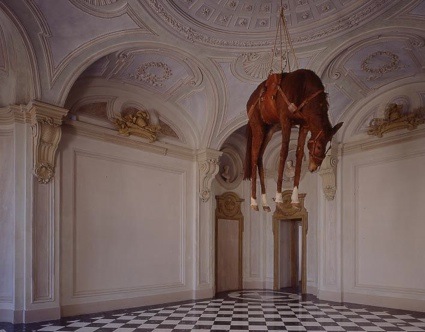 Maurizio Cattelan, Novecento, 1997. Photo Castello di Rivoli
Maurizio Cattelan, Novecento, 1997. Photo Castello di Rivoli
But let’s get back to my grievances about the exhibition. The whole setting was as unappealing as possible: aside from a stern broadsheet at the entrance of the show, there is no information to give context and meaning to the works. The chairs to view the videos -some of which are over an hour long- are remarkably uncomfortable. There are too many videos to see in one visit and i’m not sure many people are ready to shell out 6.50 euros each time they want to come back and watch the films they had missed on their first visit.
There is a website for the video archive. It contains no video at all.
A frustrating exhibition thus. I would have liked everybody to spend hours watching the videos but i can’t blame anyone for not doing so. This was a show that only the ‘intellectual elite’ would have seen. It shouldn’t have been. Still, i’m glad i fancied myself as being part of that ‘cultural elite’ because the content was exceptional.
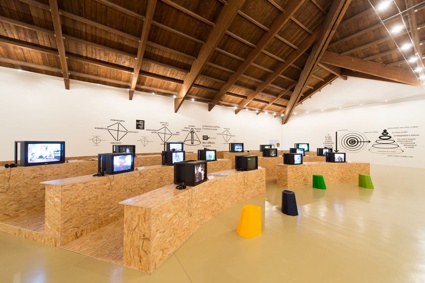 Disobedience Archive (The Republic). Exhibition view. Photo Castello di Rivoli
Disobedience Archive (The Republic). Exhibition view. Photo Castello di Rivoli
The archive is divided into nine sections: 1977 The Italian Exit looks at the revolutionary movements in Italy in the 1970s, with a focus on 1977, year of large-scale violent confrontations with a reactionary state. Protesting Capitalist Globalization documents or comments on the new social wave against globalization. Reclaim the Streets presents proposals to create autonomous social spaces through experimental forms of education, community, urbanism and architecture. Bioresistence and Society of Control refers to Foucault’s analysis of the ways the operations of power extend beyond the institutions of state. Argentina Fabrica Social explores the political and economic crisis that stretched from the 2001 uprising to the election of Néstor Kirchner. Disobedience East brings together videos of political and activist art from post-communist Europe. Disobedience University shows alternative practices and strategies in which consumption is seen as a form of co-realization and collaboration. The Arab Dissent tries to raise questions about changes and antagonism in the Middle East. Gender Politics suggest the destruction of gender identity.
The show counts 57 videos. I wish i could link to all of them but only a handful can be viewed online. Here’s my very subjective selection.
Unsurprisingly i made a beeline for the section entitled Bioresistence and Society of Control as it focused on issues encountered within prisons and asylum centers, on bacteriological experiments in warfare programmes and on other strategies deployed in the modern state to regulate and control life.
Genterra, Critical Art Ensemble, 2002
The Critical Art Ensemble had 3 films in the show. One of them was GenTerra, a collaboration with Beatriz da Costa. The video documents a participatory “theater” performance that gave the public an opportunity to get a more critical and hands-on understanding of transgenic organisms in relation to environmental and health exposure.
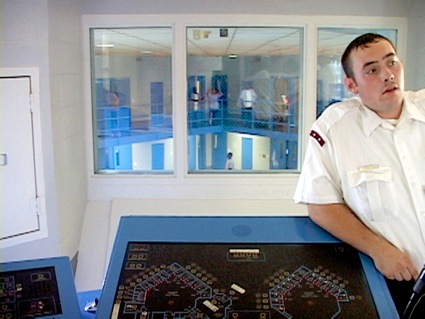 Ashley Hunt, Corrections, 2001
Ashley Hunt, Corrections, 2001
No video for Ashley Hunt‘s work, alas! In Corrections, the artist investigated the privatization of the prison system in the United States, exposing the role of the penal institution in preserving racial and economic divisions within society.
Angela Melitopoulos, The Cell – Toni Negri and the Prison (Prologue)
Angela Melitopoulos filmed three interviews with sociologist and philosopher Antonio Negri. The first in 1997 while he was in exile in Paris, the second in 1998 in the cell of Rebibbia prison in Rome, and the final one in 2003 in Rome, after his release.
Negri’s report on his life as a prisoner describes new forms of control in the penal system, the psyche and mentality of prisoners, and forms of resistance with which he was able to retain “the freedom of his spirit”.
One of the highlights of Disobedience East is a film by Harun Farocki & Andrei Ujica.
Harun Farocki & Andrei Ujica, Videograms of a Revolution, 1992 (short extract)
Videograms of a Revolution uses -professional and amateur- video archives to examine the role of television in the infolding and understanding of the 1989 Romanian revolution. ‘Demonstrators occupied the tv station in Bucharest and broadcast continuously for 120 hours, thereby establishing the tv studio as a new historical site.’
Half of the videos in the section The Arab Dissent were dedicated to the occupation of Palestine.
Khaled Jarrar, Infiltrators (Trailer), 2012
Khaled Jarrar‘s Infiltrators follows individuals and groups as they are looking for gaps in the seven meter high wall that separates the Palestinian territories from Israel.
I only saw one film in the Disobedience University selection and i think i struck gold with that one:
Eyal Sivan, ITGABER. He Will Overcome, 1993. On science and values
Eyal Sivan, ITGABER. He Will Overcome, 1993. On State and laws
According to professor Yeshyahu Leibowitz, “the honest man should know that he should never respect the law too closely”. Israeli filmmaker and critic Eyal Sivan sat down with the philosopher and listened to him talk about ethics, science, values, but also about State, religion, law and human responsibility.
Even though Leibowitz took part of in the 1948 Arab-Israeli War, he openly criticized the politics of the State of Israel, in the name of a Jewish tradition of responsibility and divine law. During the conversation, the philosopher expresses his support and solidarity with the Israeli soldiers who refuse to serve in the Occupied Territories.
The 57 videos were accompanied by two thematic rooms. The opening one contained artworks and archive documents related to the student and workers protests in the Italy of the 1970s. Again, a bit of context and explanations would have been welcome.
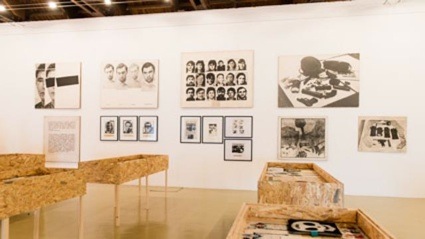 Photo from La Stampa
Photo from La Stampa
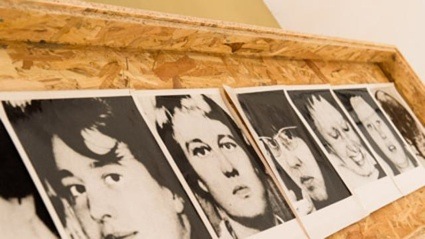 Photo from La Stampa
Photo from La Stampa
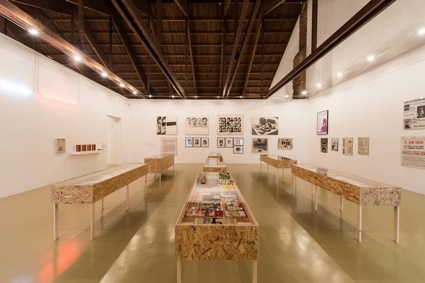 Disobedience Archive (The Republic). Exhibition view. Photo Castello di Rivoli
Disobedience Archive (The Republic). Exhibition view. Photo Castello di Rivoli
The final room amassed books, props and other objects associated with political and social dissent in first decade of the 21st century. Works by Nomeda & Gediminas Urbonas, Superflex, Journal of Aesthetics & Protest, Oliver Ressler, Arseniy Zhilyaev, Critical Art Ensemble, etc. It should have been a fascinating, informative and inspiring display. Alas, and I’m going to repeat myself, short texts about their meaning and significance would not have been superfluous (the ones in the broadsheet/guide of the exhibition were a bit too general.)
 Disobedience Archive (The Republic). Exhibition view. Photo Castello di Rivoli
Disobedience Archive (The Republic). Exhibition view. Photo Castello di Rivoli
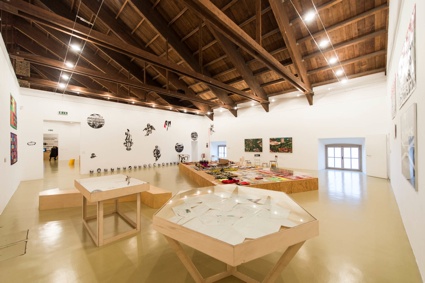 Disobedience Archive (The Republic). Exhibition view. Photo Castello di Rivoli
Disobedience Archive (The Republic). Exhibition view. Photo Castello di Rivoli
 Photo from La Stampa
Photo from La Stampa
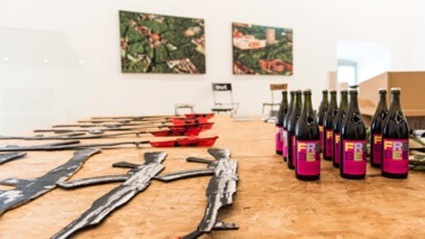 Photo from La Stampa
Photo from La Stampa
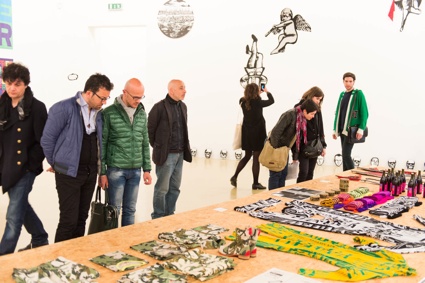 Disobedience Archive (The Republic). Exhibition view. Photo Castello di Rivoli
Disobedience Archive (The Republic). Exhibition view. Photo Castello di Rivoli
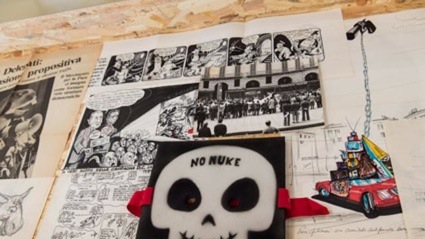 Photo from La Stampa
Photo from La Stampa
